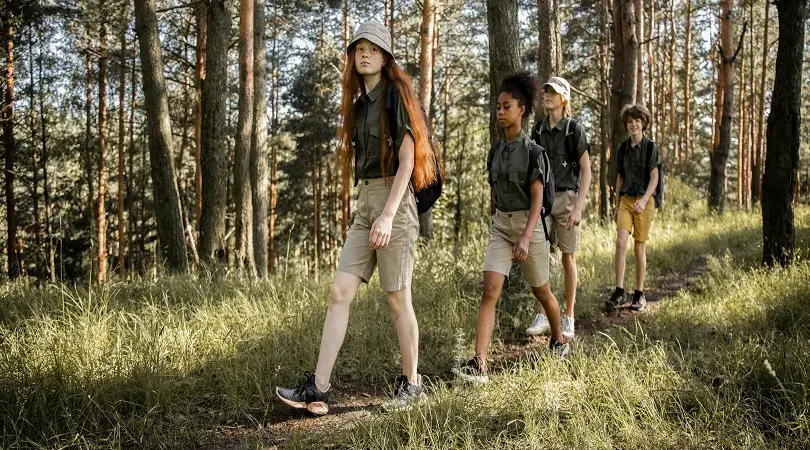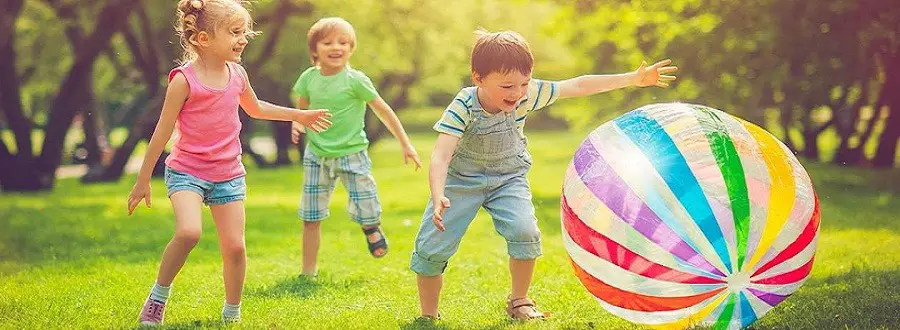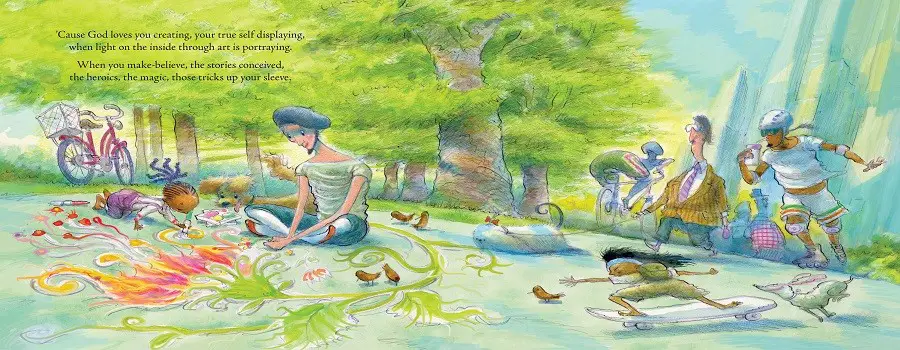Last Updated on January 6, 2025
To teach your kids about the environment, engage them in nature-centered activities, and encourage outdoor exploration. Introducing them to the beauty and importance of nature can foster a love and respect for the environment from a young age.
By incorporating hands-on experiences, like gardening, hiking, and nature walks, children can learn about sustainability and conservation in a fun and educational way. Encouraging them to ask questions and explore their surroundings will further deepen their understanding of the world around them.
Teaching kids about the environment is not only beneficial for their development but also instills a sense of responsibility toward protecting our planet for future generations. By making learning about nature interactive and engaging, children can grow up to be environmentally conscious individuals.
Benefits Of Teaching Kids About Nature
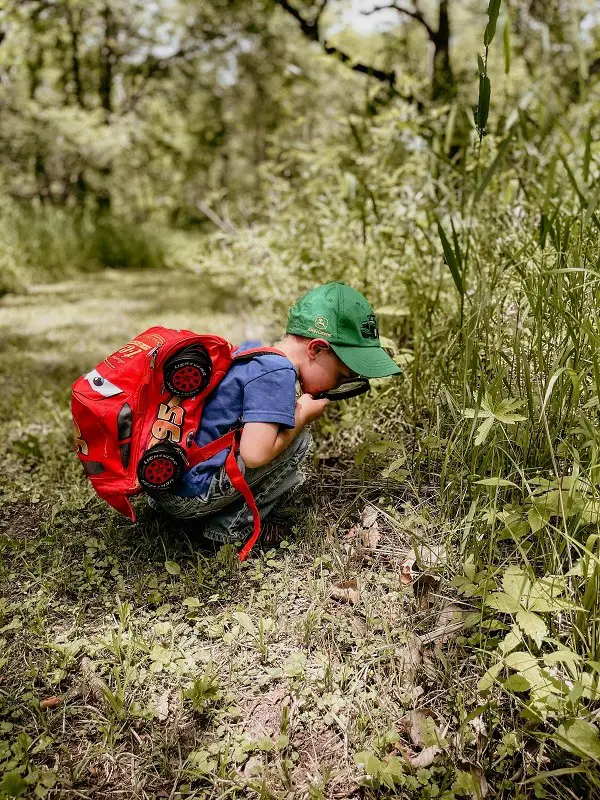
Introducing children to nature has numerous advantages.
Connecting With The Environment
Spending time outdoors helps kids form a deep connection with nature. Engagement with the environment sparks curiosity and wonder in young minds.
Developing Empathy And Responsibility
Interacting with plants and animals cultivates empathy and respect for all living beings. Taking care of nature teaches kids the importance of environmental responsibility.
Outdoor Activities To Teach Kids About Nature
Engaging in outdoor activities is a fun way to educate your kids about the environment. Nature walks and scavenger hunts as well as gardening and plant care can provide hands-on learning experiences for children. These activities not only foster a love for nature but also teach valuable lessons about conservation and sustainability.
Nature Walks And Scavenger Hunts
- Encourage kids to observe and explore their surroundings
- Identify different plants and animals they encounter
- Collect items like leaves, rocks, or feathers to learn about nature
- Discuss the importance of preserving the environment
Gardening And Plant Care
- Teach kids how to plant seeds and care for growing plants
- Explain the benefits of growing their food
- Involve them in watering and weeding the garden
- Engage in composting to show the cycle of recycling nutrients
Creating A Nature-friendly Home Environment
Transform your home into a nature-friendly environment to teach your kids about the importance of the environment. Introduce them to gardening, recycling, and nature walks to instill a love for the planet from a young age. These hands-on activities will create a deep connection to nature and encourage sustainable habits.
Integrating Sustainable Practices At Home
Opting for energy-efficient appliances and LED lighting can significantly reduce your home’s environmental impact. Encourage your kids to turn off lights and unplug devices when not in use to save energy. Conserving water is also essential, so teach them about the importance of shorter showers and turning off the faucet while brushing their teeth.
Setting Up A Backyard Wildlife Habitat
Create a welcoming space for local wildlife by planting native vegetation and providing food and water sources. Bird feeders, nesting boxes, and a small pond can attract a variety of creatures. Consider setting up a compost pile to minimize waste and enrich the soil naturally.
Implementing these sustainable practices at home and transforming your backyard into a wildlife habitat will teach your kids the value of environmental stewardship while creating a nature-friendly home environment.
Environmental Issues
Embark on a journey with your children to explore nature and raise awareness about environmental issues. Engaging in outdoor activities can help impart valuable lessons about conservation and sustainability, fostering a deep connection with the environment from an early age.
Exploring Climate Change And Its Impact
Climate change is an important environmental issue that affects our planet and its ecosystems. It is essential to teach children about this topic so they can understand the consequences and make informed decisions about the environment. Exploring climate change and its impact with your kids can be an eye-opening experience, as they learn about rising temperatures, melting polar ice caps, and extreme weather events.
- Introduce the concept of climate change by explaining that it is caused by an increase in greenhouse gases in the Earth’s atmosphere.
- Show them images or videos that highlight the effects of climate change, such as shrinking glaciers, droughts, and the destruction of coral reefs.
- Discuss the importance of reducing our carbon footprint and ways they can contribute, like conserving energy, recycling, and using eco-friendly products.
- Encourage them to participate in age-appropriate climate action initiatives like tree planting, beach cleanups, or raising awareness through artwork or writing.
Learning About Conservation And Endangered Species
Teaching kids about conservation and endangered species helps them develop a deeper appreciation for the natural world and the importance of preserving its biodiversity. By understanding the challenges faced by different species, children can become passionate advocates for conservation.
- Introduce the concept of conservation by explaining that it involves protecting natural habitats and the species that inhabit them.
- Show them images or videos of endangered species and explain the reasons behind their decline, such as habitat destruction, pollution, or poaching.
- Discuss the role of conservation organizations and the steps they take to protect endangered species, such as breeding programs, habitat restoration, and advocacy for stricter laws.
- Encourage them to participate in local conservation efforts, like volunteering at wildlife sanctuaries, donating to organizations, or spreading awareness through school projects.
Incorporating Nature Education Into School Curriculum
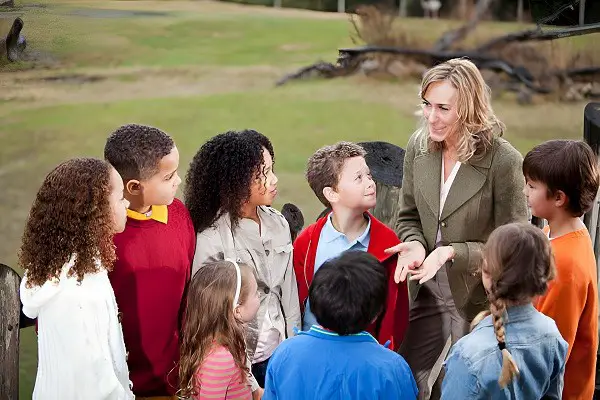
Enhancing school curricula with nature education fosters environmental awareness in children. Incorporating hands-on activities and outdoor experiences immerses kids in the wonders of the environment, nurturing a lifelong connection to nature. By integrating nature teachings into the school curriculum, children develop a deeper understanding of the ecosystem and the importance of conservation.
Promoting Environmental Education In Schools
Incorporating nature education into the school curriculum is a fantastic way to cultivate a love and appreciation for the environment in young minds. By promoting environmental education in schools, children can develop a deep understanding of the interconnectedness of the natural world and gain essential knowledge that empowers them to be responsible stewards of the environment.
Here are a few strategies to consider when incorporating nature education into the school curriculum:
Engaging With Community Nature Initiatives
One effective way to enhance nature education in schools is by engaging with community nature initiatives. Collaborating with local environmental organizations, such as parks, conservation groups, or wildlife sanctuaries, can provide access to invaluable resources and expertise.
By partnering with these initiatives, schools can organize field trips, and outdoor learning activities, or even invite guest speakers to share their knowledge with students. This involvement fosters a sense of community and allows students to experience firsthand the wonders of nature.
Implementing Outdoor Learning Experiences
Implementing outdoor learning experiences is another powerful method to incorporate nature education into the school curriculum. These experiences enable students to directly interact with the environment and apply theoretical concepts in a practical context.
Teachers can design lessons that integrate outdoor activities, such as nature hikes, gardening, or wildlife observation. These hands-on experiences not only promote a deeper understanding of environmental concepts but also spark curiosity and a sense of wonder.
Integrating Environmental Topics Across Subjects
Integrating environmental topics across different subjects is a comprehensive approach to nature education. By infusing environmental themes into subjects like science, social studies, and even mathematics, students can recognize the relevance of environmental issues in their daily lives.
For example, science lessons can focus on ecological systems, climate change, or the impact of pollution. Social studies classes can explore the historical and cultural relationship between humans and nature. Mathematics can be used to analyze data related to conservation efforts or energy consumption.
Building Outdoor Learning Spaces
Creating outdoor learning spaces within school premises is an excellent way to reinforce nature education. These spaces can include gardens, wildlife habitats, or mini-forests that serve as living laboratories for students to explore and learn from.
By involving students in the planning, design, and maintenance of these spaces, schools can instill a sense of ownership and pride in conserving the natural environment. These green havens also provide a tranquil setting for relaxation, reflection, and connection with nature.
Incorporating nature education into the school curriculum equips students with the necessary knowledge and skills to become environmentally conscious individuals. Through engaging with community nature initiatives, implementing outdoor learning experiences, integrating environmental topics across subjects, and building outdoor learning spaces, schools can create a rich and immersive environment for students to explore and appreciate the wonders of nature. By nurturing a love for the environment from a young age, we can raise a generation that cherishes and protects our natural world.
Frequently Asked Questions
What Are Some Fun Activities To Teach Kids About The Environment?
Engage your kids with nature walks, recycling crafts, gardening, animal spotting, and nature documentaries.
Why Is It Important To Teach Kids About The Environment?
Teaching kids about the environment fosters empathy, instills responsibility, encourages environmental stewardship, and creates eco-conscious future generations.
How Can I Make Learning About The Environment Educational And Fun?
Make learning about the environment interactive through games, quizzes, field trips, hands-on experiments, storytelling, and art projects.
How Do I Explain The Concept Of Climate Change To My Kids?
Explain climate change to your kids in simple terms by describing how human activities impact the Earth’s temperature, weather patterns, and ecosystems.
What Steps Can Kids Take To Protect The Environment?
Empower kids to make a difference by encouraging actions like conserving water, recycling, planting trees, reducing waste, and being mindful of energy consumption.
Conclusion
In this modern age, it’s vital to instill environmental awareness in our children. By immersing them in nature, teaching them about ecosystems, and encouraging sustainable practices, we can help shape future environmental stewards. With hands-on experiences and a sense of curiosity, children can develop a deep respect and understanding of the world around them.

